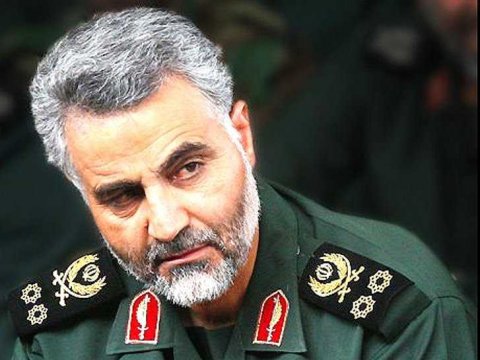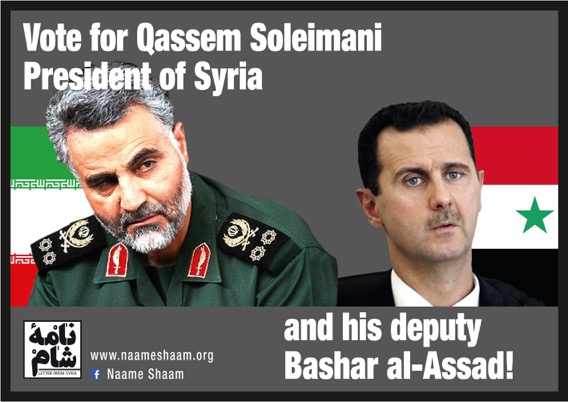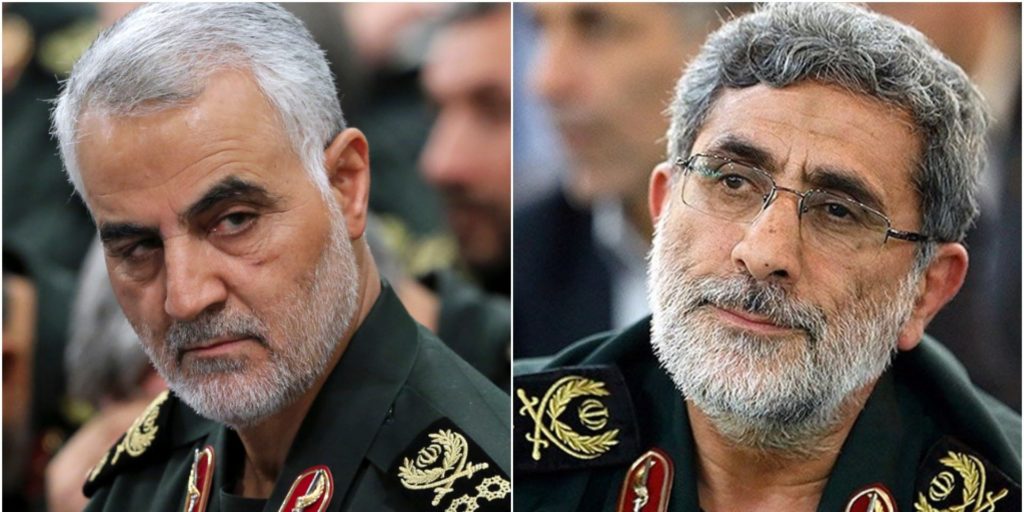By Baria Alamuddin*

The killing of Quds Force Commander Qassim Soleimani and Iraqi paramilitary leader Abu-Mahdi Al-Muhandis changes everything. With one fell blow Trump has taken out the two dominant figures exporting Iranian militancy across the region.
Although the furious regime in Tehran will seek a devastating riposte, this operation liquidates the man who for three decades masterminded its regional terrorist strategy. The death of Soleimani — lauded by Iranian leader Ali Khamenei as his “living martyr of the revolution” and believed by many to be Khamenei’s likely successor — leaves a gaping vacuum in Iran’s power to mobilize militants across the region.
Soleimani acquired the nickname Wazir Al-Mustawtanat (minister of colonies) in reflection of the pivotal role he played in orchestrating Iran’s quest for regional dominance. Iran in 2003 initially sought to appease President George W. Bush, believing it could be next after the invasions of Afghanistan and Iraq. It was Soleimani who forcefully advocated and spearheaded the policy of bogging the US down in the bloody Iraqi quagmire by building a new generation of paramilitary forces which staged thousands of attacks against coalition troops, killing around 600. When the US unsuccessfully sought to arrest Soleimani by attacking his convoy in Kurdistan in early 2007, he responded days later with one of the most audacious militant operations of the conflict, penetrating the coalition’s Karbala headquarters in broad daylight, and abducting and killing
By late 2011 most diplomats were predicting that Bashar Assad would be driven out of power within weeks. Instead, Soleimani flew to Damascus and embarked on a massive campaign to bankroll the dictator and establish sizeable militia forces (using many of his Iraqi proteges).

Soleimani’s strategy ultimately achieved the impossible, with his forces wading their way through rivers of civilian blood to retake much of the country. Russia stepped up its own involvement only after Soleimani had personally overseen the recapture of Aleppo. Soleimani was also the architect of Iran’s intervention in Yemen, incorrectly arguing that Tehran could give Gulf states a bloody nose without them ever daring to respond.
Talking to senior Iraqis and Iraq-based diplomats, it never failed to astonish me how active Soleimani was, rarely delegating activity to his subordinates. Soleimani was on the frontlines and in the operations rooms during all the key battles against Daesh. In 2017, he bribed and threatened Kurdish politicians into ordering the Peshmerga’s withdrawal from all of central Iraq, with Iran’s proxies occupying the vacuum.
As arguably the second-most powerful Iranian after Khamenei, nobody can fit into Soleimani’s outsized shoes. His designated successor as commander of the Quds Force, Esmael Ghaani, is a much lower-profile figure who will lack his late boss’ encyclopedic network of personal contacts and knowledge of a generation of Iranian militancy.

Parts of Iraq’s protest movement were quick to celebrate Soleimani’s death as an unexpected New Year gift from the Americans. Soleimani was responsible for the deaths of hundreds of protesters, personally ordering the deployment of snipers and deploying paramilitary units to confront demonstrators with lethal force. He pressured Iraq’s leaders to be even more aggressive in crushing the protests. Even if paramilitaries flood the streets to condemn the death of their idol, protesters must seize the momentum in demanding that Tehran doesn’t use their nation as an arena for a bloody confrontation with the US. This is a golden opportunity for Iraqis to begin regaining their stolen sovereignty.
In an Iraqi context, the loss of Al-Muhandis, Soleimani’s principal deputy for mobilizing militancy in Iraq, is almost as significant.
Al-Muhandis was the effective head of the Al-Hashd Al-Shaabi paramilitary coalition, a dominant force across much of Iraq, militarily and politically. He marginalized moderate and non-sectarian elements of the Hashd, creating a movement wholly subject to Iranian authority. He was also commander of the Hezbollah Brigades, which the US targeted with airstrikes a few days ago.
Iraqi leaders who have long endured Soleimani’s reign of terror, including many who owe their positions to him, were quick to issue shrill declarations of condemnation. Al-Muhandis’ paramilitary ally, Hadi Al-Amiri, declared that the price of these assassinations must be the immediate and full departure of the US from Iraq. Iraqi politicians will come under immense pressure to support this goal.
Tehran knows that it cannot afford to appear weak. Given the crippling impact of US sanctions on Iran’s economy, Tehran’s principle strategy in recent months — masterminded by Soleimani himself — has been to use attacks against regional targets to compel Trump to retreat from his maximum pressure strategy; knowing the president’s desire to avoid overseas military commitments. Iran’s failure to respond to this devastating assassination in a manner that is comparably deleterious to US regional interests will be tantamount to acknowledging that it is a paper tiger.
The Tehran regime is like a bag of angry cats. They are capable of lashing out painfully, yet this operation could goad them into a succession of rash, foolish and self-defeating actions that will fundamentally undermine the regime itself. Soleimani was widely despised by Iranians for squandering the nation’s wealth on overseas terrorism. There will be little sympathy among citizens if the regime plunges the region into a futile and costly war over his death.
By killing Soleimani, the US has decapitated the principal agent of Tehran’s strategy for regional hegemony, bringing an end to a long phase of Tehran-branded militancy dominated by the Quds Force commander personally. No other global terrorist boasts Soleimani’s longevity in overseeing thousands of paramilitary and terrorist attacks over at least four decades. He lived by the sword and died a fitting death. His passing should not be mourned.
We are in uncharted territory. How Tehran’s regime chooses to respond in the coming days — either lashing out or withdrawing to lick its wounds — will have reverberations in the region for years to come.
- Baria Alamuddin is an award-winning journalist and broadcaster in the Middle East and the UK. She is editor of the Media Services Syndicate and has interviewed numerous heads of state.
- EURASIA REVIEW
Leave a Reply
You must be logged in to post a comment.